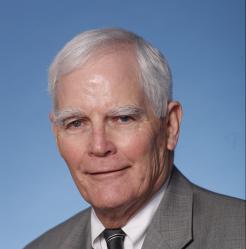INTRODUCTION
Economic inequality has been on the rise in America for more than three decades. The nation’s traditional engine for promoting equality and opportunity—its public education system—has been unable to halt that upward trend despite increased public spending at the preschool, K–12, and postsecondary levels. Meanwhile, accumulating research evidence reveals that postsecondary education has, for the past few decades, proved an increasingly powerful tool in boosting the income and economic mobility of disadvantaged students. Here we outline steps that high schools can take to increase the college readiness of poor and minority students, making it more likely that they will be accepted into and graduate from college.
The annual income difference between Americans with a college degree and those with a high school degree was more than $33,000 in 2007, up from $12,500 in 1965. More to the point, long-term intergenerational data from the Panel Study of Income Dynamics show that a college degree helps disadvantaged children move up the income distribution past peers in their own generation. Adult children with parents in the bottom fifth of income, for example, nearly quadruple (from 5 percent to 19 percent) their chance of moving all the way to the top fifth by earning a college degree.
But too few poor kids get a college degree. About one-third of all youngsters from the bottom fifth of family income enter college and only 11 percent get a degree. By contrast, 80 percent of those from the top fifth enter college and well over half earn a degree.
Perhaps the primary reason that poor and minority students do not enter and graduate from college is that they are poorly prepared to do well there. The problem is especially evident in the huge gap between the academic achievement of white, Asian, and middle- and upper-income students as compared with black, Hispanic, and low-income students. And decades of educational reform aimed at reducing this gap have had, at best, modest success. Striking evidence of how few college freshmen meet even the most basic college preparation standards is provided by Jay Greene and Greg Forster of the Manhattan Institute. Defining minimum college readiness as receiving a high school diploma, taking courses required by colleges for basic academic preparedness, and demonstrating basic literacy skills, Greene and Forster report that only around 40 percent of white and Asian students were college ready by these criteria. But that figure was twice the 20 percent rate for black students and more than twice the 16 percent rate for Hispanic students.
The latest issue of The Future of Children, devoted to exploring how to improve America’s high schools, contains several articles that touch on student preparation for postsecondary education and the world of work. An especially compelling article, written by Melissa Roderick, Jenny Nagaoka, and Vanessa Coca, of the Consortium on Chicago School Research at the University of Chicago, contains a careful analysis of how to measure whether students are ready for college and a host of proposals for actions high schools can take to increase their students’ readiness for postsecondary education. As the Roderick article and related research and analysis make clear, recent years have seen an upsurge of support for the goal of helping all students, but especially poor, urban, and minority students, prepare for college, enter college, and earn a terminal degree. Attaining that goal, we believe, would boost economic mobility in the United States and help the nation live up to its ideals of equality of educational and economic opportunity.
The Brookings Institution is committed to quality, independence, and impact.
We are supported by a diverse array of funders. In line with our values and policies, each Brookings publication represents the sole views of its author(s).



